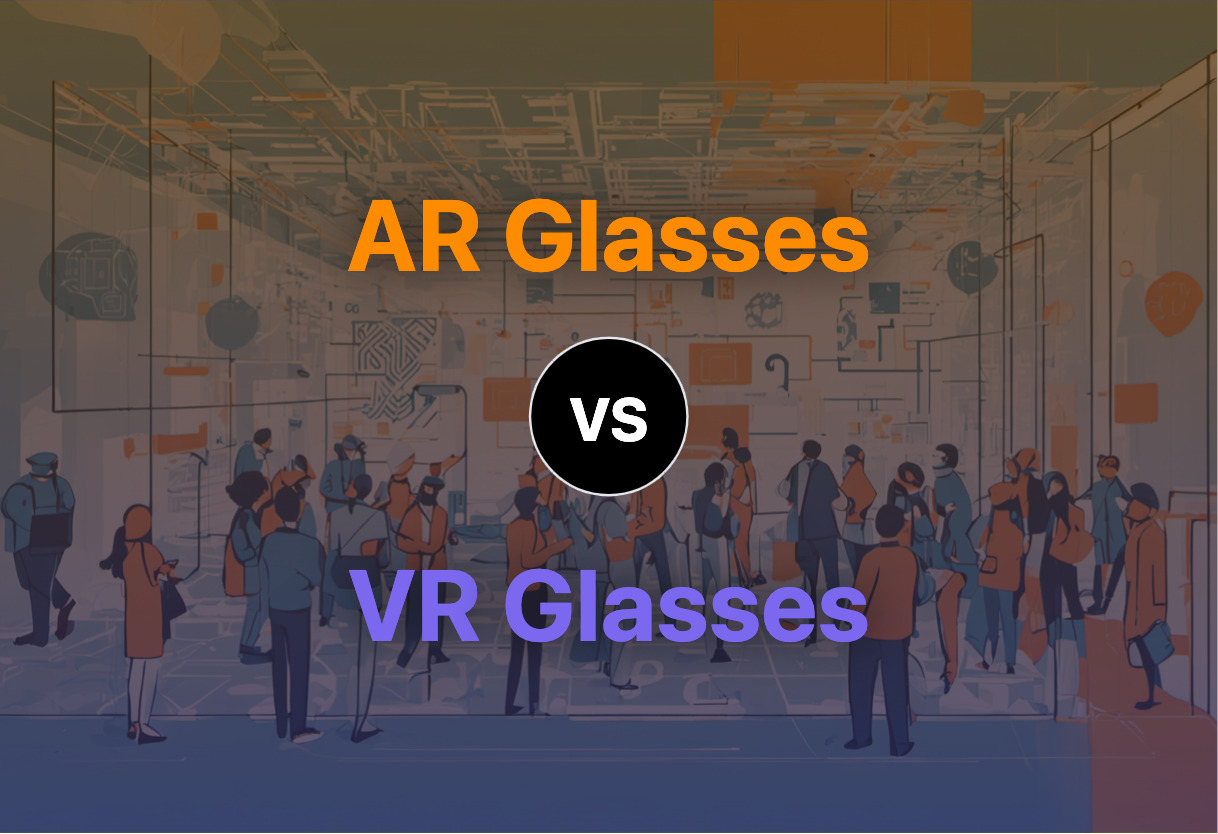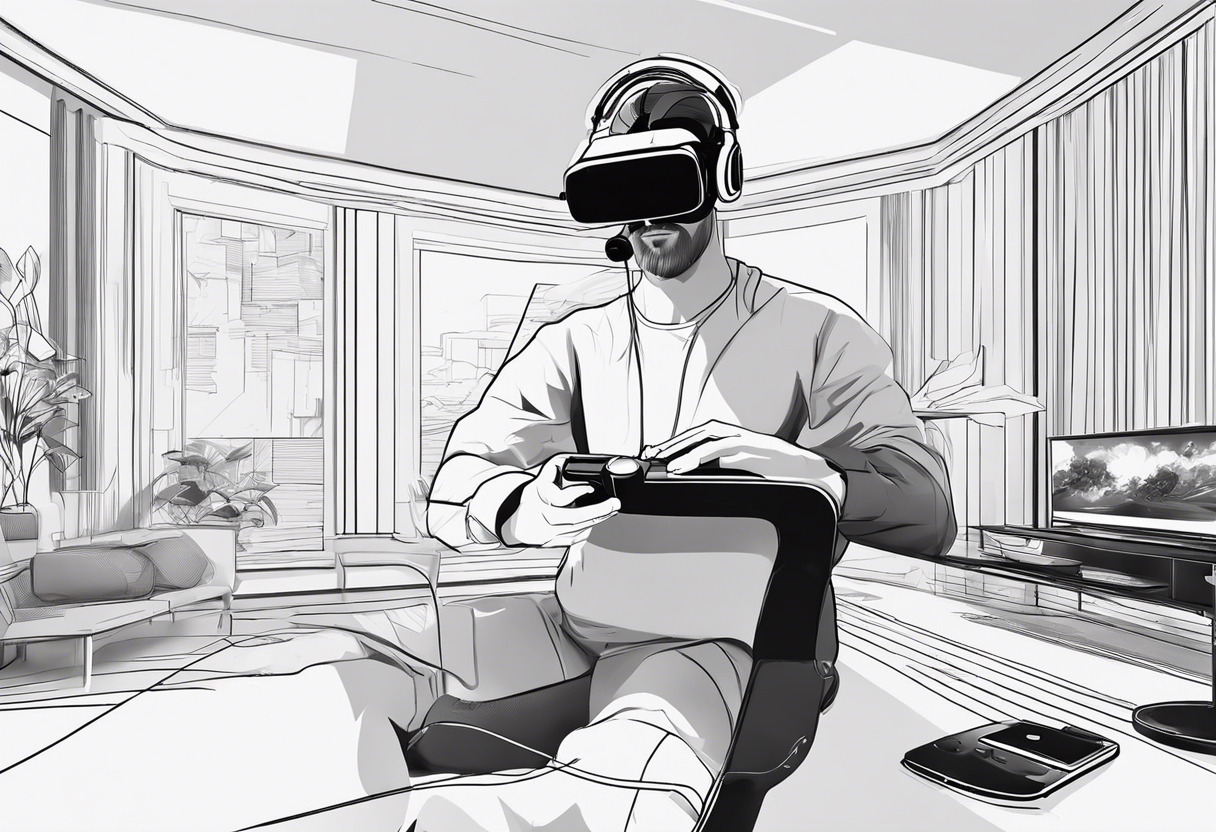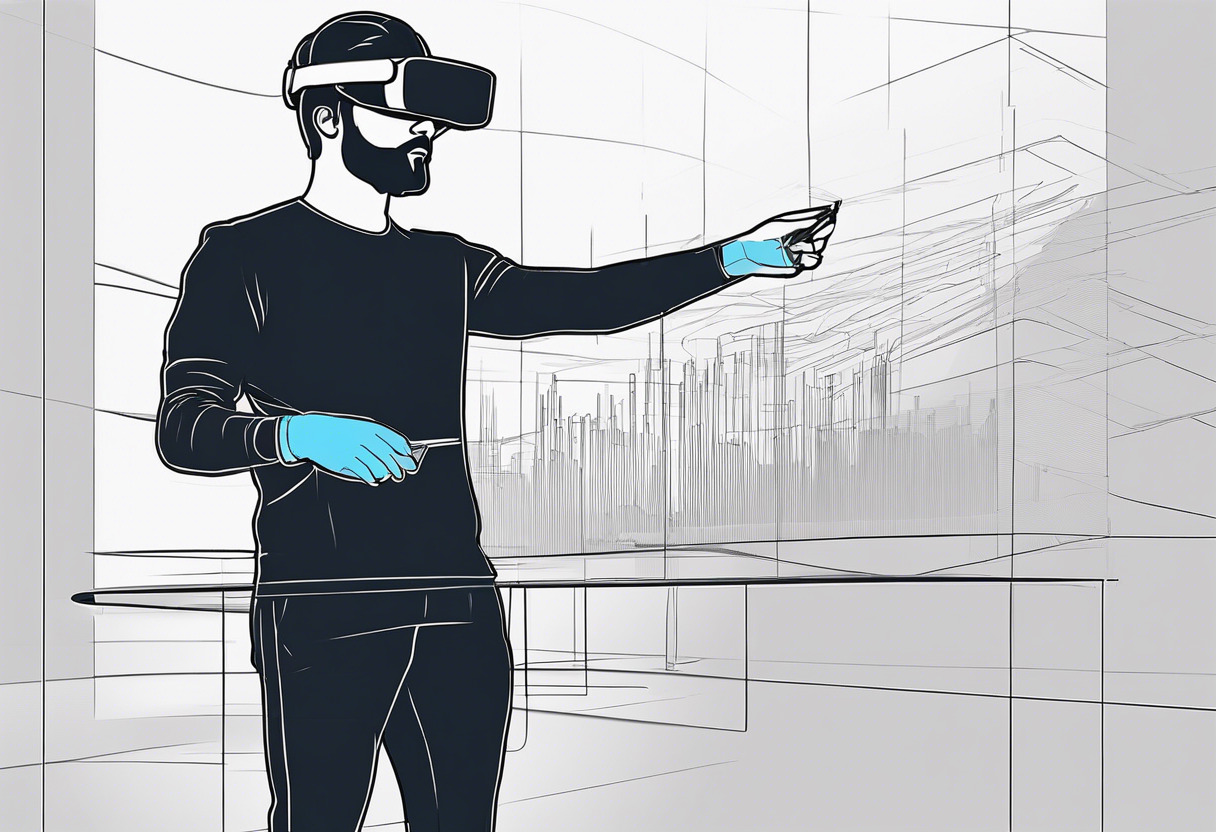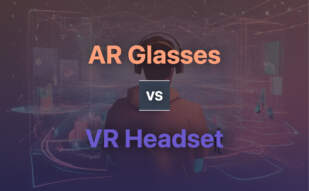If a weightless and immersive gaming experience is your endgame, choose VR glasses. However, if blending digital and physical worlds for multitasking interests you, then AR glasses are a better fit.

Key Distinctions Between AR Glasses and VR Glasses
- While both AR glasses and VR glasses offer immersive experiences, AR merges real and virtual realms, VR plunges you into pure virutality.
- AR glasses such as Vuzix Blade 2 or Nreal Air are lightweight, portable and sync easily with smartphones and laptops, whereas VR headsets, like Oculus Rift or HTC Vive, need external hardware and high-powered systems.
- AR caters to productivity and day-to-day tasks, allowing multitasking with AR overlays; VR, however, is predominantly gaming-oriented.
- Entry barriers like cost and setup vary: AR glasses leverage existing phone/computer hardware and cost around $999 at premium end, while high-functioning VR sets like the Rift are priced at $599 plus the necessity of owning a VR-ready PC or gaming console.
| Comparison | AR Glasses | High-End VR Setups |
|---|---|---|
| Scope of Technology | Combines AR and VR, Projects screen into vision, Multi-task capabilities, Window productivity | Focused primarily on VR, Requires VR-ready PCs or gaming console, Freedom of movement in space |
| Top Choice Devices | Meta Quest Pro, Nreal Air, Rokid Air, Xreal Air, Ray-Ban Stories Smart Glasses, Lenovo ThinkReality A3 | Oculus Rift, Valve, HTC’s Vive, Sony PlayStation VR, Meta Quest 2, HTC Vive Pro 2 |
| Price Range | Average to high; Quest Pro at $999, Varies with device functionality and features | High; Oculus Rift at $599, HTC Vive at $799, PlayStation VR cost depending on console price |
| Affordability and Usage | Wide-screen experience, Mac and smartphone connectivity, Lightweight, Portable | Comfortable wear, Light-blocking, Motion-tracking, Gamified experience |
| Best For | Media consumption, Content capture, Audio experience, Multi-screen productivity | High-end graphics rendering, Gaming immersion, High-resolution visuals, Large-room movement |
| Future Prospects | Apple’s Vision Pro, OPPO Air Glass | Further improvements to reduce motion sickness, increase comfort |
What Is AR Glasses and Who’s It For?
AR Glasses are a blend of augmented reality and personal vision, ideal for tech-savvy enthusiasts and professionals seeking superior user-experience. These are compact devices offering virtual screens that minimize physical device usage. They’re perfect for those requiring multitasking, AR-based personnel training or simply an immersive experience.
AR Glasses standout products include; Xreal Air, known for its robust software, Rokid Max, rated for Media Consumption, and Lenovo’s ThinkReality A3, offering Windows productivity. The most anticipated release is Apple’s Vision Pro with promising AR capabilities.

Pros of AR Glasses
- Enables multitasking with multiple windows
- Affordable and lightweight compared to full-sized devices
- Offers immersive AR and VR experiences
- Connectivity with Mac and other devices
Cons of AR Glasses
- Current products not as ambitious as concepts like Google Glass
- More expensive models may be prohibitive for some consumers
- Dependent on external devices for projection
What Is High-End VR Setups and Who’s It For?
High-End VR Setups, comprising Oculus Rift, HTC’s Vive, Sony PlayStation VR, and others are cutting-edge VR technologies aimed at early adopters and gaming enthusiasts. These setups offer high-resolution screens, quality graphics, and motion tracking for unparalleled immersive experiences.
Notable options include Meta Quest 2 which requires no additional devices, PlayStation VR for console-based VR, and HTC Vive Pro 2 offering very high ‘5K’ resolution, tailored to users’ varying preferences and platforms.

Pros of High-End VR Setups
- Features high-quality graphics and high-resolution screens
- Includes motion tracking for immersive experiences
- Supports movement through a tracked space
Cons of High-End VR Setups
- Expensive pricing targetting only early adopters
- Requires VR-ready PCs, escalating the total cost
- Oriented mainly towards video games, limiting versatility
Choosing Your Reality: AR Glasses vs VR Glasses
To arm yourself with the best tech, an understanding of the battleground is essential. Equipped with facts, let’s render the complex simple.
The Gamers
Targeting VR Glasses is a sagacious choice considering the comprehensiveness provided. Oculus Rift and PlayStation VR house a plethora of captivating games rendered in high resolution. HTC’s Vive and the PlayStation VR, with specially designed controllers and impressive freedom of movement, amplify the immersive quality not met by AR counterparts.

The Content Creators and Consuming Enthusiasts
The Rokid Max, a champion in media consumption with superior speakers, large screen, and the Ray-Ban Stories Smart Glasses, excelling in content capture, bestow an optimal experience for content creators and enthusiasts, tip the scale towards AR Glasses. Intricate balance meets sturdy power, evident in the strong software backing of Xreal Air, slant the choice.

Professionals and Productivity Seekers
The Lenovo ThinkReality A3 reveals a lucid prowess in productivity functions with its virtual desktop outputting multiple screens. In the professional layer, the pricy but highly competent Microsoft’s HoloLens 2 excels in AR-based personnel training and project management, rendering AR Glasses a potent option.

The Budget Conscious
Considering that high-end VR setups often require stand-alone, expensive, VR-ready PCs, and AR Glasses like Xreal Air provide high-quality experiences at affordable prices, AR Glasses make more financial sense for the budget cautious segment.

Daring leaps with VR elevate gaming; AR heralds an era of versatile utility – pick your realm. VR Glasses dominate game-worlds, but AR Glasses shine in media, productivity, and budget-friendly domains. Lens choice reflects utility, choose wisely.
Tiffany Brise
Content writer @ Aircada, patiently awaiting a consumer AR headset that doesn’t suck.





